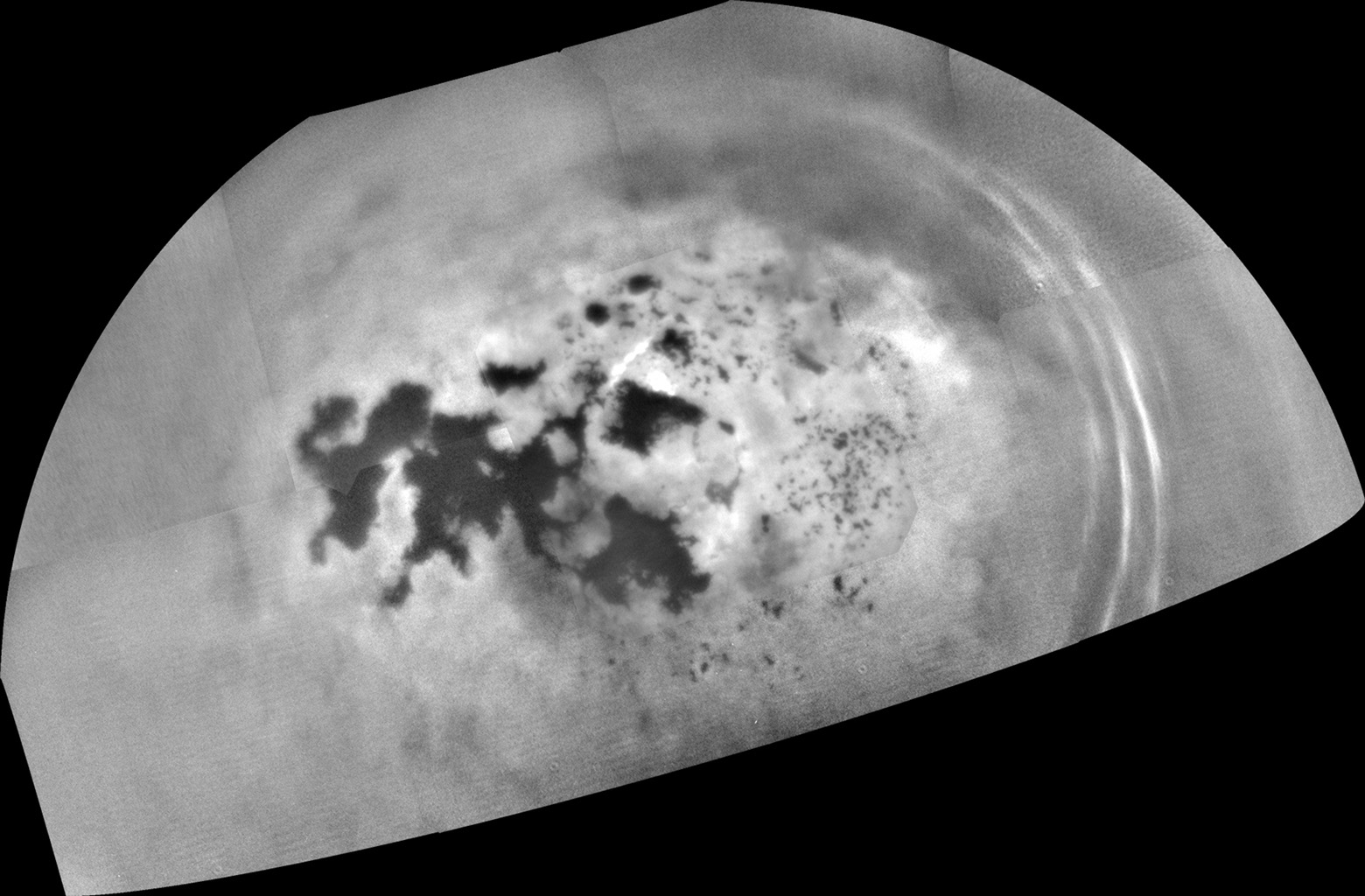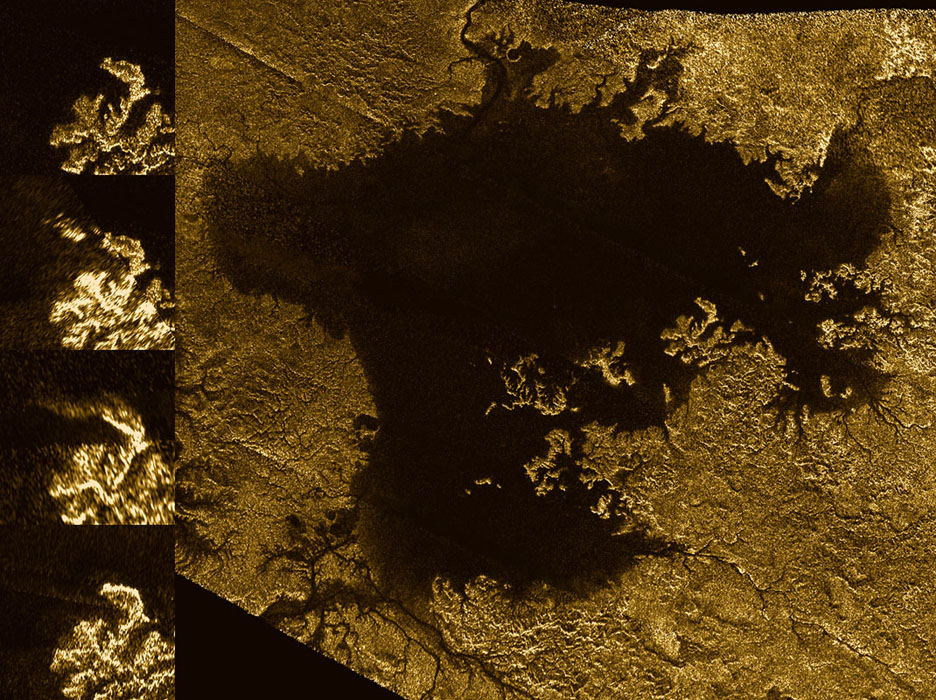Fizzy Titan! Saturn Moon's Mysterious 'Magic Islands' May Be Nitrogen Bubbles

The case of the Saturn moon Titan's bizarre "magic islands" has taken an intriguing turn.
These strangely shifting island-like features, which NASA's Saturn-orbiting Cassini probe has spotted in several of Titan's hydrocarbon seas, may actually be rafts of fizzing nitrogen bubbles, a new study based on laboratory experiments suggests.
"Thanks to this work on nitrogen's solubility, we're now confident that bubbles could indeed form in the seas and, in fact, may be more abundant than we'd expected," study co-author and Cassini radar team co-investigator Jason Hofgartner, of NASA's Jet Propulsion Laboratory (JPL) in Pasadena, California, said in a statement. [Amazing Photos of Saturn's Moon Titan]
The researchers, led by Michael Malaska of JPL, simulated surface conditions on the 3,200-mile-wide (5,150 kilometers) Titan, a frigid moon with a hydrocarbon-based weather system and a thick atmosphere that's 98 percent nitrogen. On Titan, liquid methane rains from the skies, runs down rivers, and gathers in lakes and seas (though some of the latter contain primarily ethane).

Indeed, Titan is the only solar system body besides Earth known to support stable bodies of liquid on its surface.
The experiments performed by Malaska and his colleagues suggest that lots of nitrogen can likely dissolve in the moon's lakes and seas — and that small shifts in pressure, temperature and other variables can send the gas fizzing out, like the carbon dioxide bubbles in a bottle of just-opened soda.
"Our experiments showed that when methane-rich liquids mix with ethane-rich ones — for example, from a heavy rain, or when runoff from a methane river mixes into an ethane-rich lake — the nitrogen is less able to stay in solution," Malaska said in the same statement.
Get the Space.com Newsletter
Breaking space news, the latest updates on rocket launches, skywatching events and more!
This two-way movement of nitrogen gas — into and out of Titan's seas and lakes — is probably a common occurrence on the giant moon, he added.
"In effect, it's as though the lakes of Titan breathe nitrogen," Malaska said. "As they cool, they can absorb more of the gas, 'inhaling.' And as they warm, the liquid's capacity is reduced, so they 'exhale.'"
These findings seem to bolster the hypothesis that Titan's magic islands — which change shape, disappear and, in at least one case, reappear — are gas bubbles. Alternatively, scientists have also posited that the features may be waves or patterns created by rainfall.
The new study, which was published last month in the journal Icarus, could also help inform future Titan exploration efforts, NASA officials said.
"A fizzy liquid could also cause problems, potentially, for a future robotic probe sent to float on or swim through Titan's seas," they wrote in the same statement. "Excess heat emanating from a probe might cause bubbles to form around its structures — for example, propellers used for propulsion — making it difficult to steer or keep the probe stable."
Follow Mike Wall on Twitter @michaeldwall and Google+. Follow us @Spacedotcom, Facebook or Google+. Originally published on Space.com.
Join our Space Forums to keep talking space on the latest missions, night sky and more! And if you have a news tip, correction or comment, let us know at: community@space.com.

Michael Wall is a Senior Space Writer with Space.com and joined the team in 2010. He primarily covers exoplanets, spaceflight and military space, but has been known to dabble in the space art beat. His book about the search for alien life, "Out There," was published on Nov. 13, 2018. Before becoming a science writer, Michael worked as a herpetologist and wildlife biologist. He has a Ph.D. in evolutionary biology from the University of Sydney, Australia, a bachelor's degree from the University of Arizona, and a graduate certificate in science writing from the University of California, Santa Cruz. To find out what his latest project is, you can follow Michael on Twitter.
